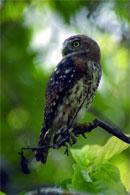The Pleasure of Birdwatching
Since the dawn of mankind, human beings have been fond of birds. That explains their obsession to conquer the sky and fly like them. Ancient civilizations paid tribute to them, sung to them and painted them in countless images through the centuries. Birds make up one of the largest zoological groups, the result of an evolutionary process occurred millions of years ago and that eventually spawned thousands of species.
Can you imagine for a moment any landscape without birds? Could the world be conceived without the chirp of fluttering birds? There’s no doubt that birdwatching is one of the most interesting activities there are.
Finding out how they feed, how they build their nests and take care of their offspring, how they defend their own territories are elements that dazzle those who love flying creatures. Birds are highly praised for their esthetic values and for a number of other useful reasons, like biological control of plagues, seed dissemination, pollination and for their role in the ecological balance. They are also a great foodstuff, a hunting prize and a token of what nature tourism is actually all about.
Birdwatching -contrary to hunting- is supposed to make huge scientific and economic contributions to countries bent on keeping clean, unpolluted environments. The insular Caribbean enshrines over 550 different bird species, with more than half (371) hailing exclusively from the Cuban archipelago.
Cuba is also a mandatory stopover for a huge amount of migratory birds that usually nestle in the continental areas and fly down to the Caribbean in search of warmer temperatures during the winter.
The Challenges for Birdwatchers The Cuban bird fauna comprises 25 endemic species. A handpicked bunch of them is a must-see for any birdwatcher, especially given their unusual habitat, a situation that makes them hard-to-spot critters worth stealing a long peek at.
The following species belong to this selective group of sneaky birds: Ferminia Ferminia cerverai Discovered by Fermin Cervera in the early 20th century. Its habitat is exclusively restricted to shrubs in the western part of the Zapata Marshlands.
Santo Tomas Hen Cyanolimnas cerverai In addition to being a hard-to-spot bird of sneaky behavior, this fowl lives in inhospitable environments. There’s little overall information about it.
Royal Woodpecker Campephilus principalis In the 19th century, this bird was commonly seen around the island, especially in the provinces of Pinar del Rio, Matanzas and Guantanamo. Unshackled felling of woodlands has forced the royal woodpecker to fall back upon the heaviest eastern jungle. Some experts believe the royal woodpecker has already vanished.
Restless Travelers Year after year, birds migrate from their nestling spots to the places where they are supposed to spend the winter, only o fly their way back home. Scholars assume this practice stems from the need to seek better living conditions for their development and survival. In the Caribbean area, the migratory timeframe usually takes place between the months of August and November, with a peaking period in October. The flight back home occurs between the months of March and May.
Some of the birds that visit Cuba during this time of year are: Pink Flamingo Phoenicopterus ruber ruber This is the only of five flamingo species that flies to other Caribbean islands and territories, chiefly to the Bahamas and the Yucatan Peninsula. In the case of Cuba, they are mostly spotted on Coco and Romano keys, off the northern shore of the Camaguey province.
Mariposa Passerina ciris This is one of the loveliest migratory birds. The male sports a blend of blue, yellow, green and red colors. It’s hard to spot due to increasingly dwindling numbers in North America.
Forest Beautie According to mavens, the pigmentation of birds’ feathers is linked to their habitats. Thus, birds that live in shadowy woods affect bright colors, while those that call dry areas home usually have lighter hues. On the other hand, gender differences are also well marked.
Males are beautiful because they need to underscore their sex appeal, whereas the females only flaunt gorgeous feather colors in certain times of year, like in the mating period.
In our country, birdwatchers may feast their eyes on the Aparecido de San Diego (Cyanerpes cyaneus), one of the most beautiful birds of the entire Cuban archipelago. Its shades range from blue to black and yellow on the reverse side of the wings. They are commonplace in Pinar del Rio, Santiago de Cuba and Guantanamo.
The cabrero (Spindalis zena) boasts an unbelievable combination of colors in its feathers with a superb mixture of yellow, black, white, brown and green. It’s easily spotted all across the island while feeding on fruits.
As we’ve read in these pages, the Caribbean islands –with their numerous reserves and nature parks- are a paradise for birdwatchers. Within that selective group, Cuba ranks high on the list due to a privileged geographical position between the north and south migratory corridors. In addition to that, Cuba is blessed with a good deal of endemic species worth staring at for a while.






































































